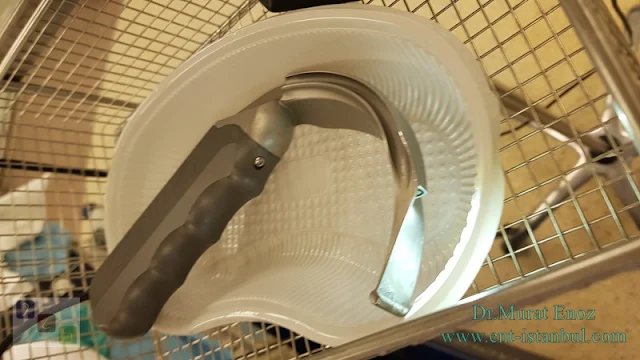General Anesthesia Becomes More Risky in Patients With Sleep Apnea Syndrome
In patients with obstructive sleep apnea, as a result of the upper airways loosening and closing during deep sleep, upper airway collapse and complete closure of the habva tract are in question. Generally, this situation is recurrent and in most patients, an increase in the risk of cardiovascular diseases and systemic adverse effects are inevitable over time. In moderate and severe obstructive sleep apnea syndrome, as the number of episodes of sleep apnea increases, the likelihood of this systemic adverse effect increases (airway collapse and respiratory arrest for 10 seconds or more is called "sleep apnea").
Intubation In Patients With Severe Sleep Apnea May Be Risky!
It may be very risky for a physician who does not have enough equipment or experience to intubate a patient with unconsciousness and severe oral sleep apnea syndrome in emergency conditions!
First of all, you can watch how the intubation tube is placed before general anesthesia and how mechanical ventilation is performed in the video below.
Intubation and Mechanical Ventilation
As shown in this video, muscle relaxant drugs are given to the patient before general anesthesia to reduce and eliminate muscle tone. In other words, in a patient who already has a tendency to collapse in the respiratory tract, the airway may be closed with a serious negative pressure in the throat area during the reduction of muscle tone, and trying to open this airway with the help of simple metal laryngoscopes, jaw and game damage, lack of oxygen in the patient (hypoxia) and associated may cause complications.
The following two separate videos show what obstructive sleep apnea is and how sleep apnea occurs.
What is Obstructive Sleep Apnea (OSA)?
Recurrent Respiratory Pause Lasting More Than 10 Seconds During Sleep: Sleep Apnea
As seen in the videos above, patients with obstructive sleep apnea syndrome already have stenosis or laxity in the airway. In other words, these patients are prone to airway collapse. Obese patients, especially those with short and thick necks, are more risky for sleep apnea. In these patients, for example, when they present to the hospital with a situation such as a traffic accident and loss of syrup, it may be very difficult to intrude and it may be beneficial to put a pillow under the shoulder and tilt the head backwards.
Flexible Intubation Videoendoscope Is Very Important For Intubation of Patients With Severe Obstructive Sleep Apnea Syndrome
It may be beneficial to use Flexible Intubation Videoendoscope Systems without straining the jaw in patients with severe and moderate obstructive sleep apnea syndrome, especially with shunting, short and thick neck features. These systems are used by doctors to insert the intubation tube into the trachea, instead of trying to open the jaw using metal laryngoscopes with great force; By opening a limited amount of mouth, it allows the intubation tube to be inserted into the lower respiratory tract, trachea, with the help of a flexible endoscope.
There are various guidelines emphasizing what should be done for "difficult intubation" in patients with obesity or sleep apnea. Links you can browse >> Management of difficult intubation : European Journal of ... / [Difficult intubation in adults] - PubMed / 10 Rules for Approaching Difficult Intubation - Anesthesiology ... / Intubation: Difficult Airway | IntechOpen
Guidelines for airway & sleep apnea management in the obese patient
Even if only a simple surgical procedure is performed; If patients have severe sleep apnea syndrome, necessary information and precautions should be taken before the operation. General anesthesia may result in strain or damage to the upper incisors and jaw due to mechanical trauma in the patient with severe sleep apnea, and the patient may not be intubated. It is ideal for patients with shivering and sleep apnea to be operated in hospitals with high-level anesthesia conditions.
Similar links >> About The "Sleep Test (Polysomnography - PSG)" / Is Snoring and Sleep Apnea A Problem That Must Be Treated? / Simple Snoring and Obstructive Sleep Apnea / Obstructive Sleep Apnea Syndrome and Snoring / How is Sleep Apnea Revealed When Lying On The Back in Deep Sleep? / Sleep Apnea ⇒ Obesity and ⇒ Sleep Apnea Again - A Vicious Circle!
Murat Enoz, MD, Otorhinolaryngology, Head and Neck Surgeon - ENT Doctor in Istanbul
Private Office:
Address: İncirli Cad. No:41, Kat:4 (Dilek Patisserie Building), Postal code: 34147, Bakırköy - İstanbul
Appointment Phone: +90 212 561 00 52
Appointment Phone: +90 212 561 00 52
Fax: +90 212 542 74 47




Comments
Post a Comment